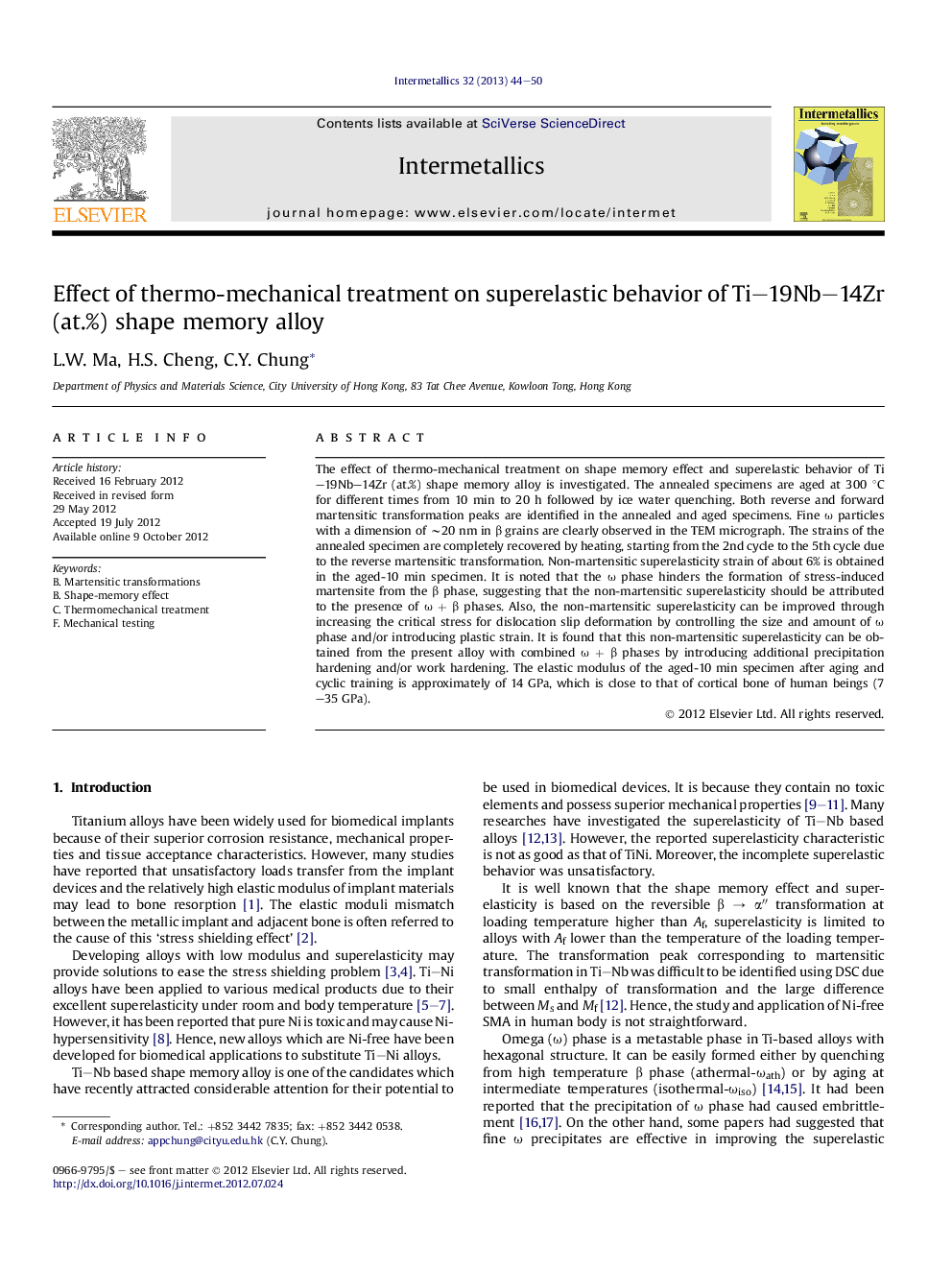| Article ID | Journal | Published Year | Pages | File Type |
|---|---|---|---|---|
| 7989070 | Intermetallics | 2013 | 7 Pages |
Abstract
The effect of thermo-mechanical treatment on shape memory effect and superelastic behavior of Ti-19Nb-14Zr (at.%) shape memory alloy is investigated. The annealed specimens are aged at 300 °C for different times from 10 min to 20 h followed by ice water quenching. Both reverse and forward martensitic transformation peaks are identified in the annealed and aged specimens. Fine Ï particles with a dimension of â¼20 nm in β grains are clearly observed in the TEM micrograph. The strains of the annealed specimen are completely recovered by heating, starting from the 2nd cycle to the 5th cycle due to the reverse martensitic transformation. Non-martensitic superelasticity strain of about 6% is obtained in the aged-10 min specimen. It is noted that the Ï phase hinders the formation of stress-induced martensite from the β phase, suggesting that the non-martensitic superelasticity should be attributed to the presence of Ï + β phases. Also, the non-martensitic superelasticity can be improved through increasing the critical stress for dislocation slip deformation by controlling the size and amount of Ï phase and/or introducing plastic strain. It is found that this non-martensitic superelasticity can be obtained from the present alloy with combined Ï + β phases by introducing additional precipitation hardening and/or work hardening. The elastic modulus of the aged-10 min specimen after aging and cyclic training is approximately of 14 GPa, which is close to that of cortical bone of human beings (7-35 GPa).
Related Topics
Physical Sciences and Engineering
Materials Science
Metals and Alloys
Authors
L.W. Ma, H.S. Cheng, C.Y. Chung,
